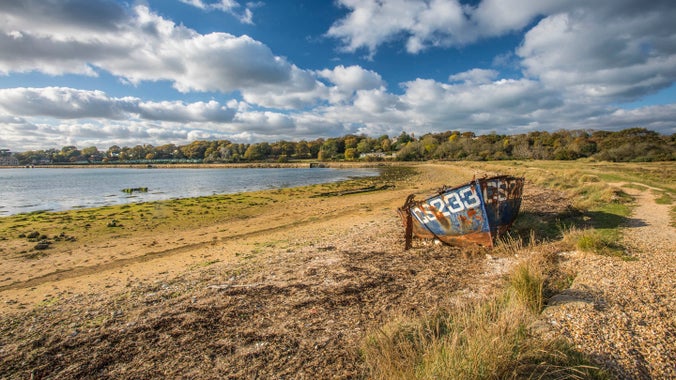
Become a member
Join today and help protect nature, beauty and history – for everyone, for ever. Enjoy access to more than 500 places with National Trust membership.
Sand dunes with a royal history and great coastal views
St Helens Duver, St Helens, Isle of Wight, PO33 1XZ

| Asset | Opening time |
|---|---|
| Countryside | Dawn - Dusk |
Parking is managed via the JustPark app. Free parking is available for National Trust members, but members must register their membership card details in the JustPark app to benefit. Non members can use the app to pay for parking. We don't allow overnight parking due to the impact on nature and wildlife, staff resource and visitors.
Dogs are welcome but please pick up after your dog and keep them on a short lead around livestock, and under close control at all other times.
Access to the beach via sandy paths, with a ramp onto the soft sand. At high tide the top of the beach can be covered. Path in the woods behind the beach can get very muddy and has steps. Pay and display car park. Dogs welcome - keep on short lead and close control around livestock.
The Duver has expanses of short turf and gently undulating ground. Some sand and gravel paths. No gates or stiles. Access to the beach via sandy paths onto the concrete sea wall.
There is a ramp onto the soft sand.
Path in the woods behind the beach - can be very muddy and has steps.
Discover all you need to know about visiting St Helens Duver, Isle of Wight, with your four-legged friend. St Helens Duver is a one pawprint rated place.

Sandy spit of land on the eastern tip on the Isle of Wight, which is rich in wildlife and history. Once home to The Royal Isle of Wight Golf Club.
The limestone ledges are great for rock pooling. Sandy beach and viewpoint for sealife and passing ships.
Rich in wildlife and home to a flock of Hebridean sheep, alexanders flowers, red squirrels, blackcap and many other small birds.
Discover the wild woodland and beachside activities that will keep the whole family feeling happy on a visit to St Helens Duver, including the dog.

Discover the huge range of wild animals that have made a home in the rock pools, grassland and woodlands on the eastern tip of the Isle of Wight.


A light-filled, 70s-styled home with impressive sea views from its large balcony.

A stylish 70s hang-out, high on a wooded cliff with fabulous views.

A pretty Victorian cottage in its own walled garden, within walking distance to the beach.

This former clubhouse is now a quirky holiday cottage with a verandah great for wildlife watching.
A circular coastal walk from St Helens village that takes you along a wildlife-rich sandy spit of land.

A short but varied coastal walk exploring St Helens Duver, a sandy spit of land on the eastern tip of the Island.

Sorry, there are no upcoming events at this place
St Helens Duver is a lovely place to relax or gently wander. There are sandy beaches, rock pools, sand dunes and coastal woods all within a small area. There is easy access from the car park onto the Duver with its short turf and gently undulating ground and views over Bembridge Harbour.
The beach is also very close at hand and although it can get quite busy in the summer there's space for everyone if you wander further along the shore.
The Duver has an interesting history as a Victorian golf course with royal patronage. But now it is a fascinating place to look for wildlife from burrowing digger wasps to wasp spiders, and tiny flowers or water birds over the harbour.
Discover the human history of St Helens Duver, from the earliest evidence of human activity, the building of Old St Helens Church, and the smuggling activity rife in the area.

Explore the history of one of England’s first golf courses, which once counted royalty and celebrities among its members, and shaped the sporting rules still used today.

Discover the rich maritime history that surrounds St Helens Duver, including the fort built as defence against a French invasion, which was used in the First and Second World Wars.


Join today and help protect nature, beauty and history – for everyone, for ever. Enjoy access to more than 500 places with National Trust membership.
By sharing your email address you’re agreeing to receive marketing emails from the National Trust and confirm you’re 18 years old or over. Please see our for more information on how we look after your personal data.